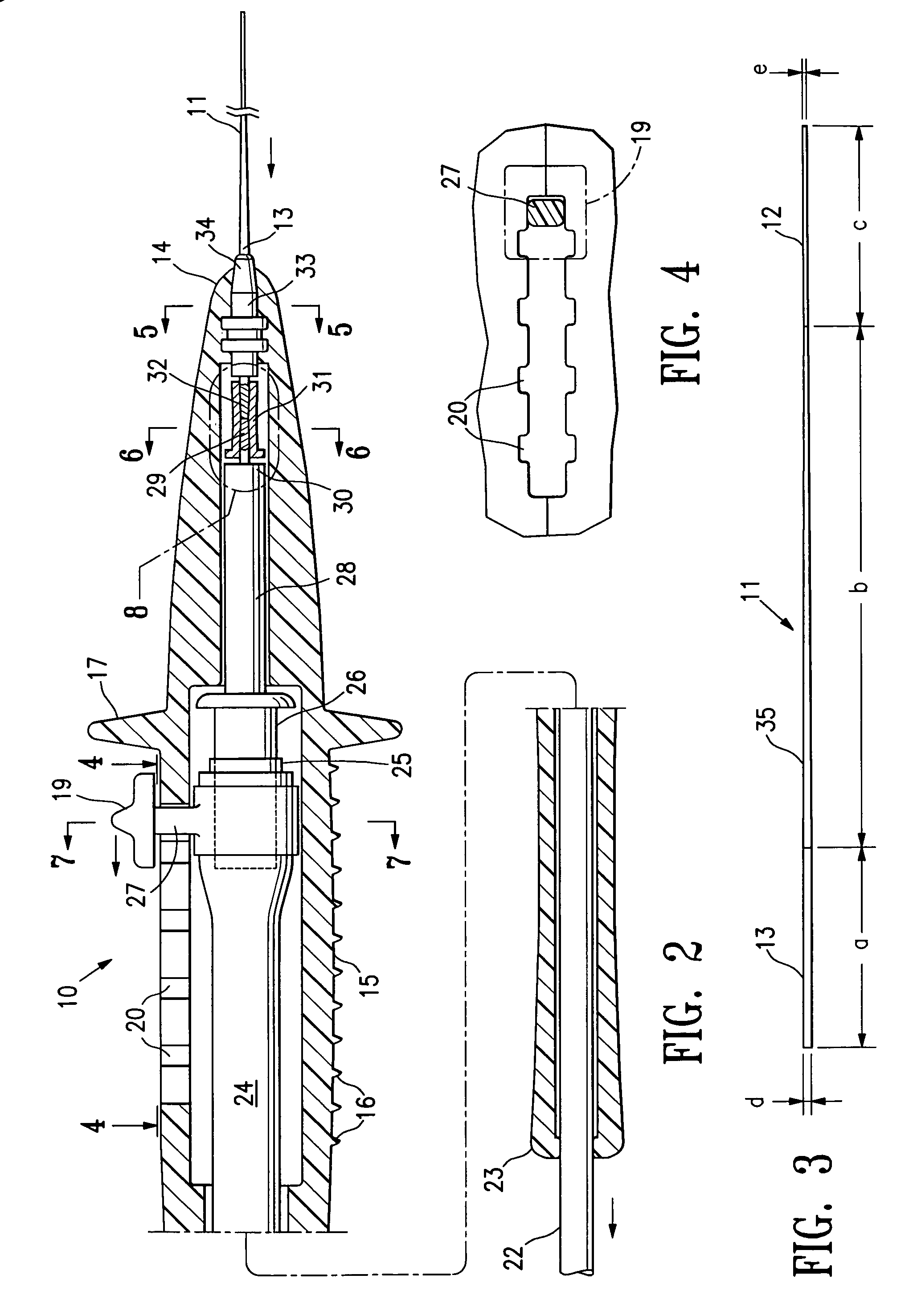Shapeable electrosurgical scalpel
a scalpel and electrosurgical technology, applied in the field of shapeable electrosurgical scalpels, can solve the problems of not being able to assist the surgeon in making the smallest cut, the tools provided for the surgeon to remove the tissue are not well suited for performing the procedure, and the surgeon cannot achieve the effect of minimizing the invasiveness of the surgical procedure, and reducing the risk of infection
- Summary
- Abstract
- Description
- Claims
- Application Information
AI Technical Summary
Benefits of technology
Problems solved by technology
Method used
Image
Examples
Embodiment Construction
[0036]FIGS. 1-8 depict an electrosurgical cutting device 10 embodying various features of the invention which generally has a cutting electrode 11 with a free or exposed distal portion 12 and a proximal portion 13 which is secured within the distal end 14 of handle 15. The exterior of handle 15 is provided with ridges 16 configured for gripping by the physician or other operator to allow control of the device during operation and a radially extending flange 17 to protect the hand of the operator during operation of the electrosurgical device. The handle 15 is provided with a button type switch 18 for switching an RF electrode power source (not shown) to an active or “on” position or to an inactive or “off” position. A switching function may also be provided for alternative modes such as for coagulation. As best shown in FIGS. 2 and 4, the handle 15 may be provided with a thumb slide 19 to allow axial translation of an electrode assembly within the handle with detents 20 being provid...
PUM
 Login to View More
Login to View More Abstract
Description
Claims
Application Information
 Login to View More
Login to View More - R&D
- Intellectual Property
- Life Sciences
- Materials
- Tech Scout
- Unparalleled Data Quality
- Higher Quality Content
- 60% Fewer Hallucinations
Browse by: Latest US Patents, China's latest patents, Technical Efficacy Thesaurus, Application Domain, Technology Topic, Popular Technical Reports.
© 2025 PatSnap. All rights reserved.Legal|Privacy policy|Modern Slavery Act Transparency Statement|Sitemap|About US| Contact US: help@patsnap.com



